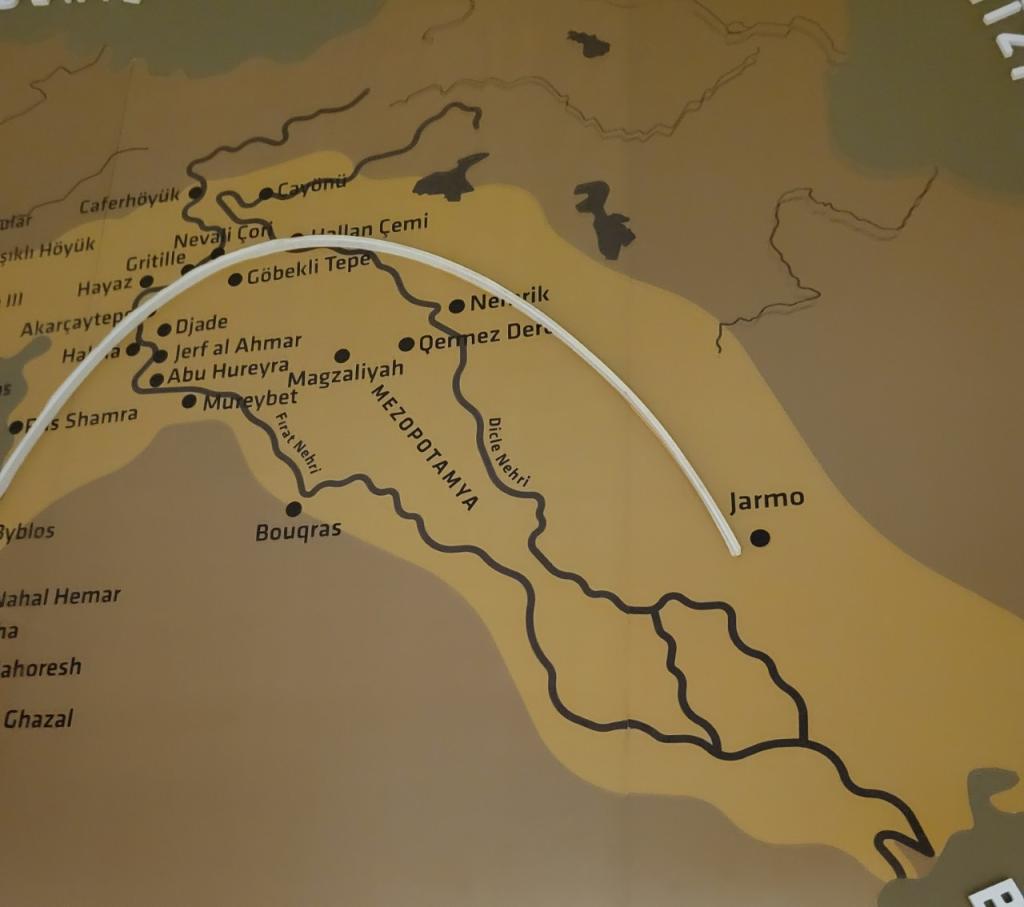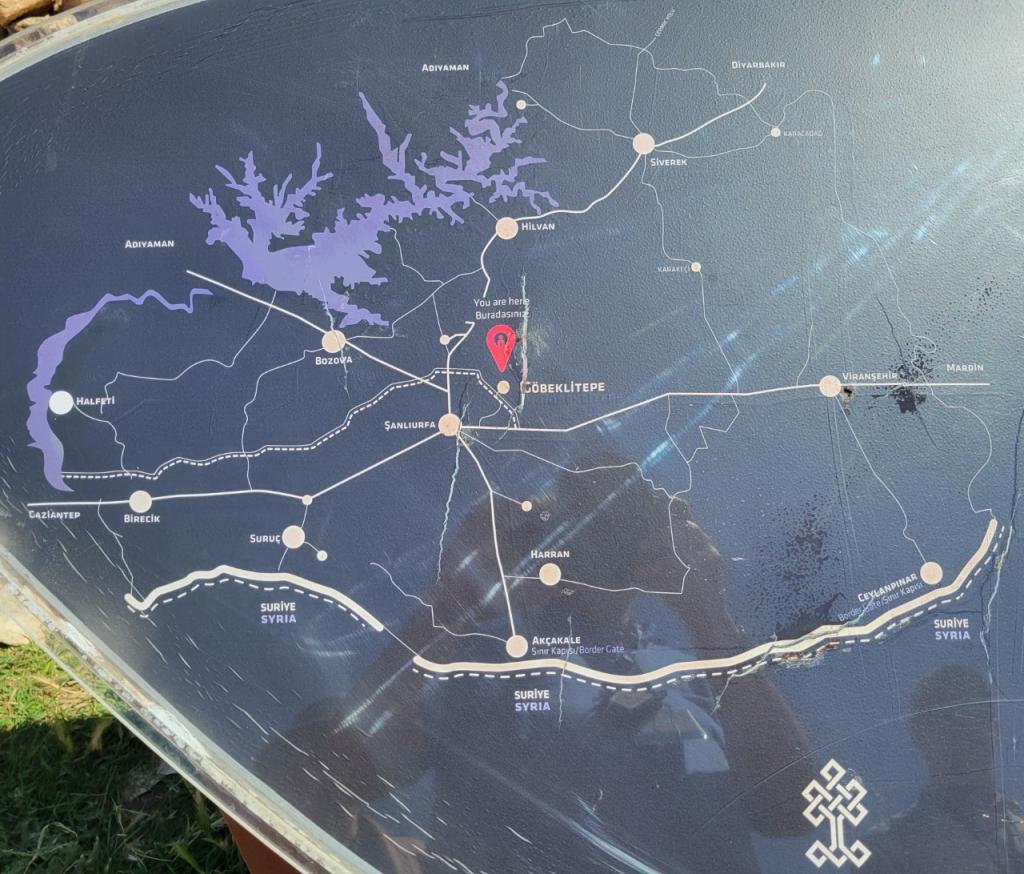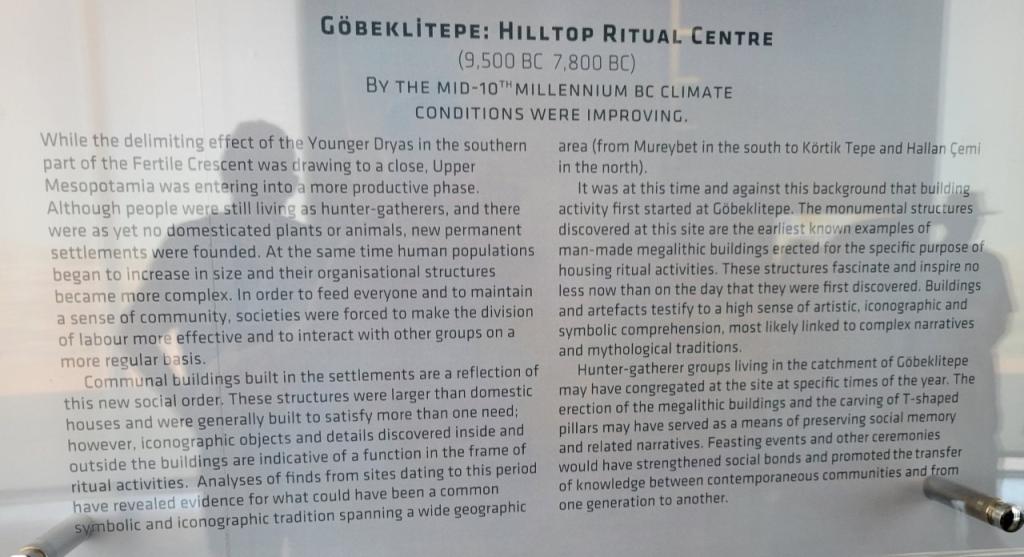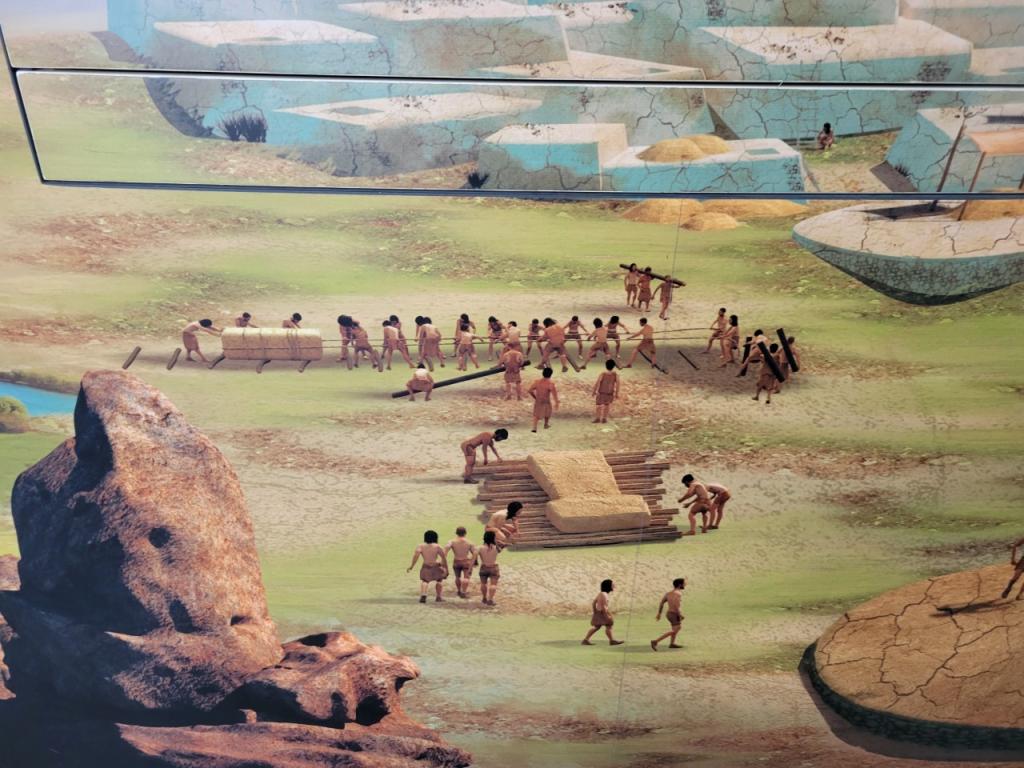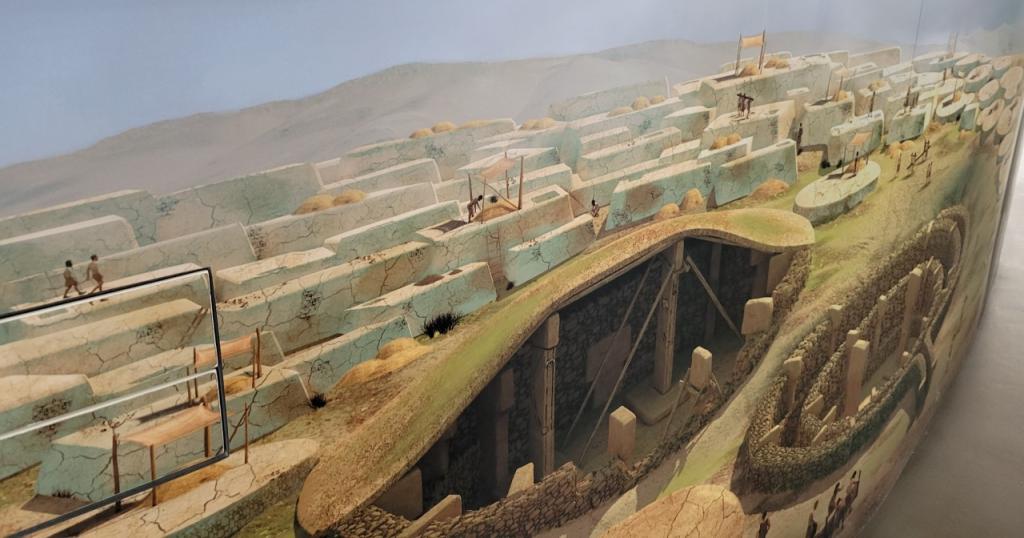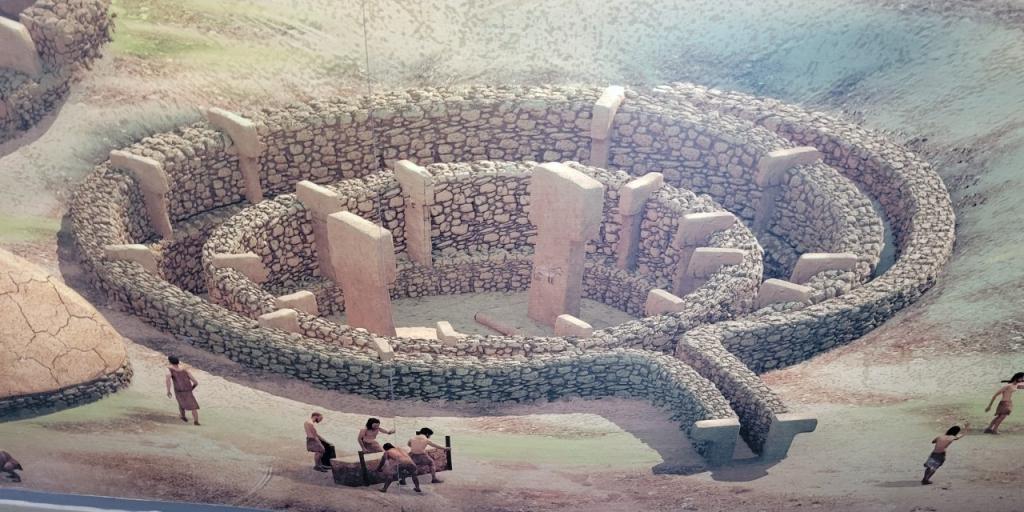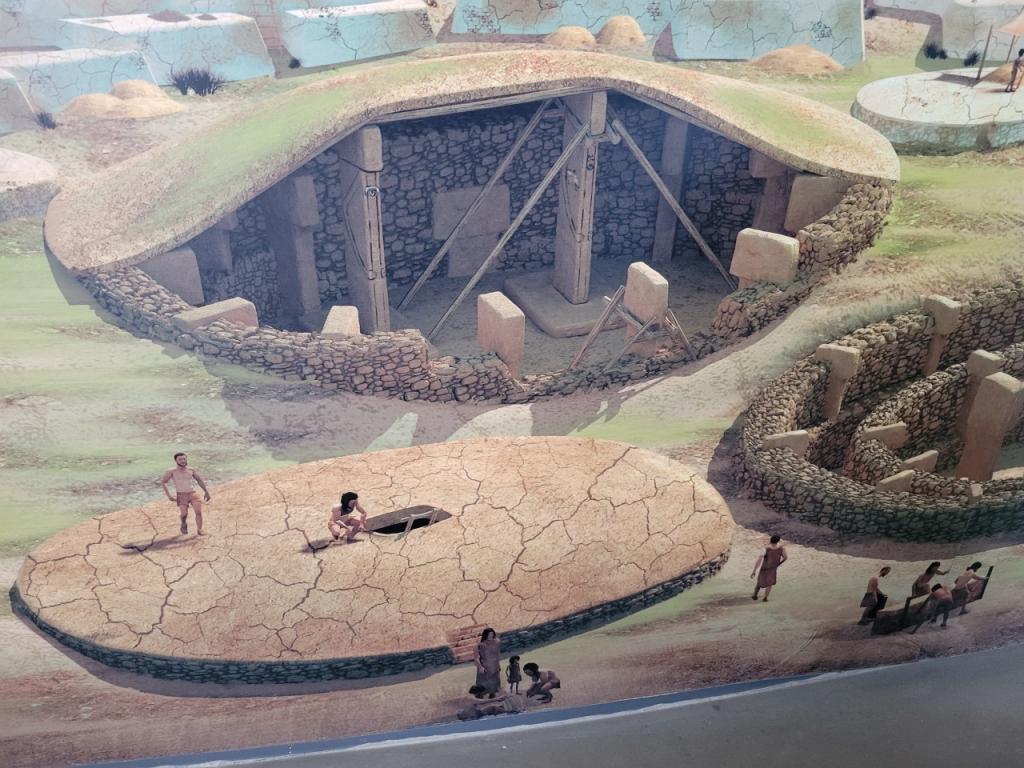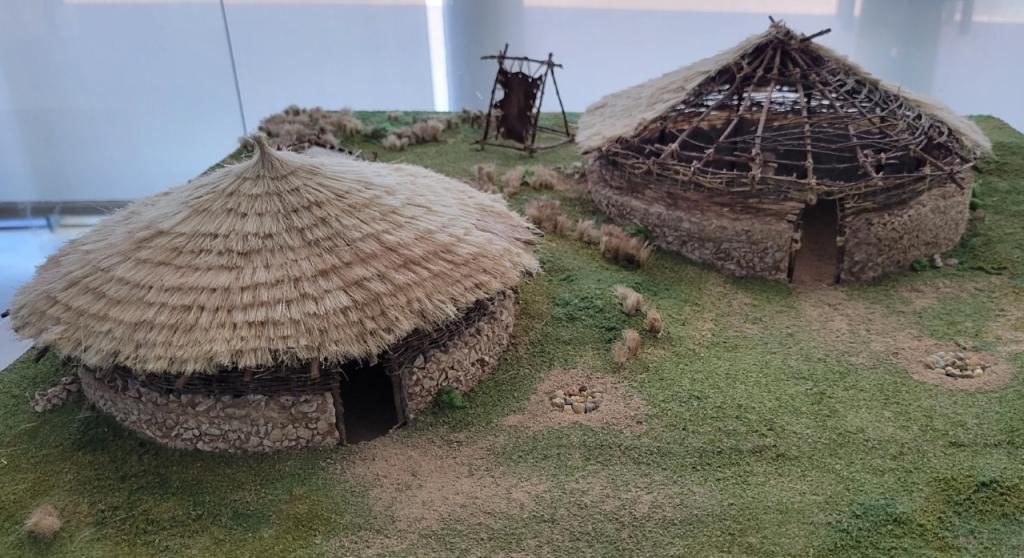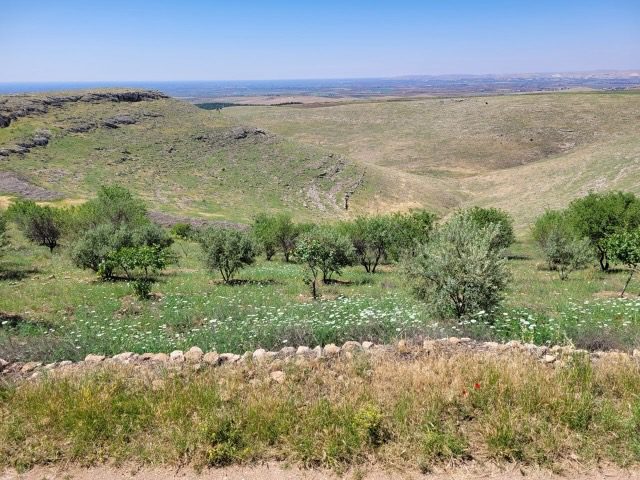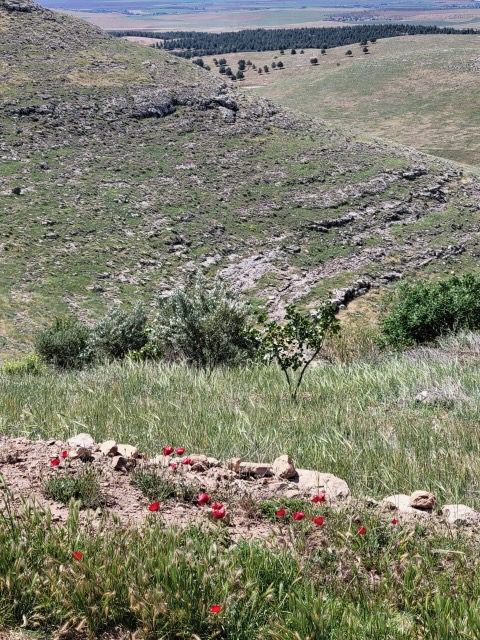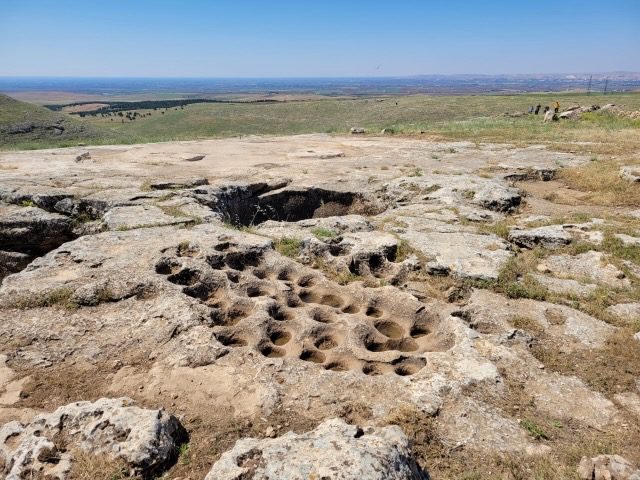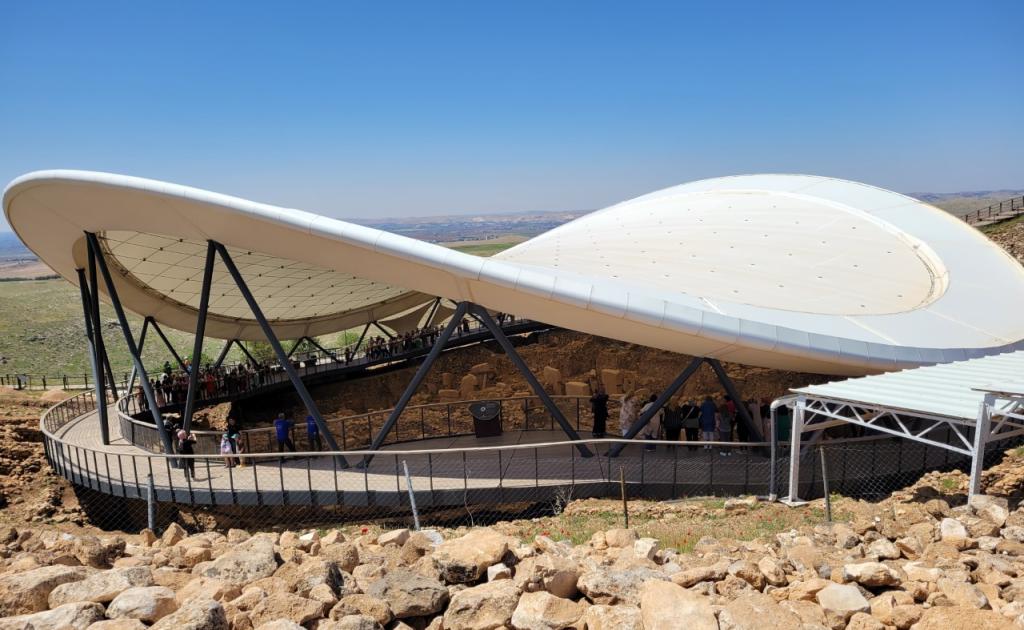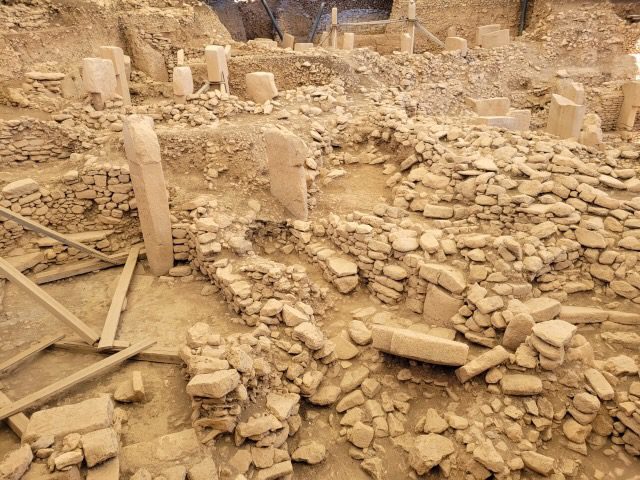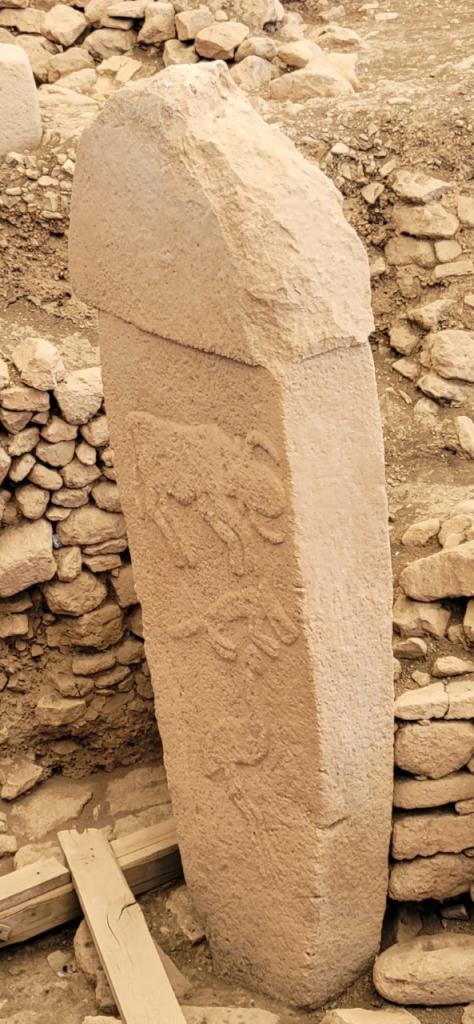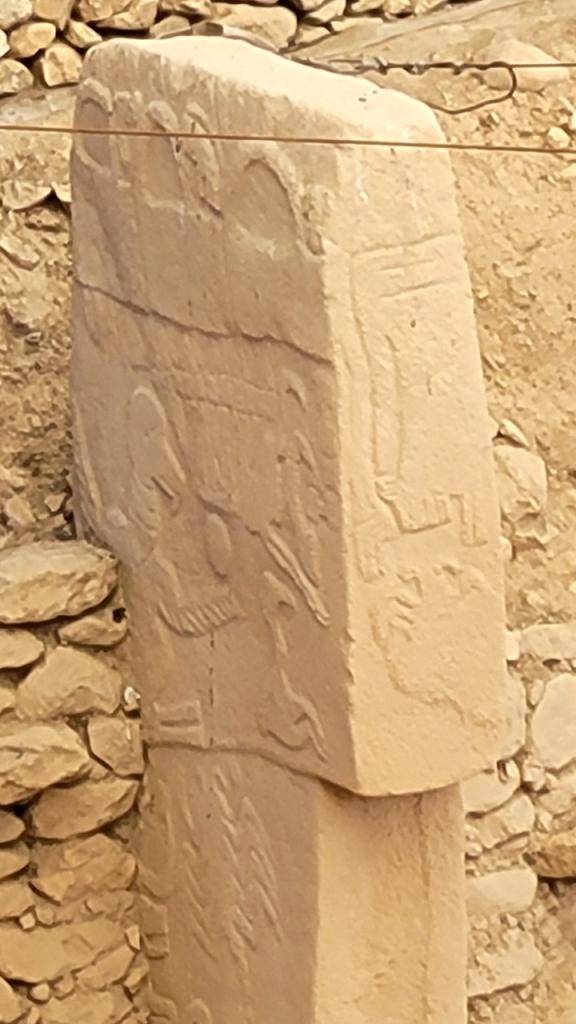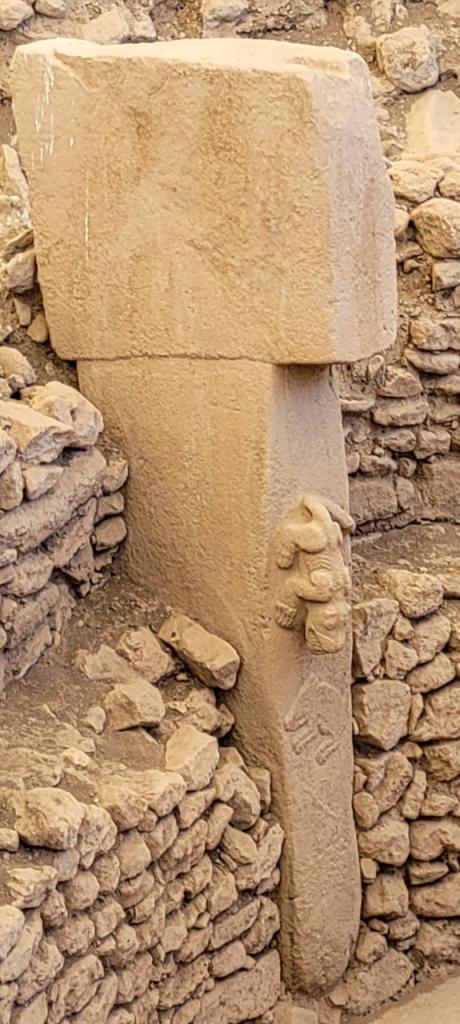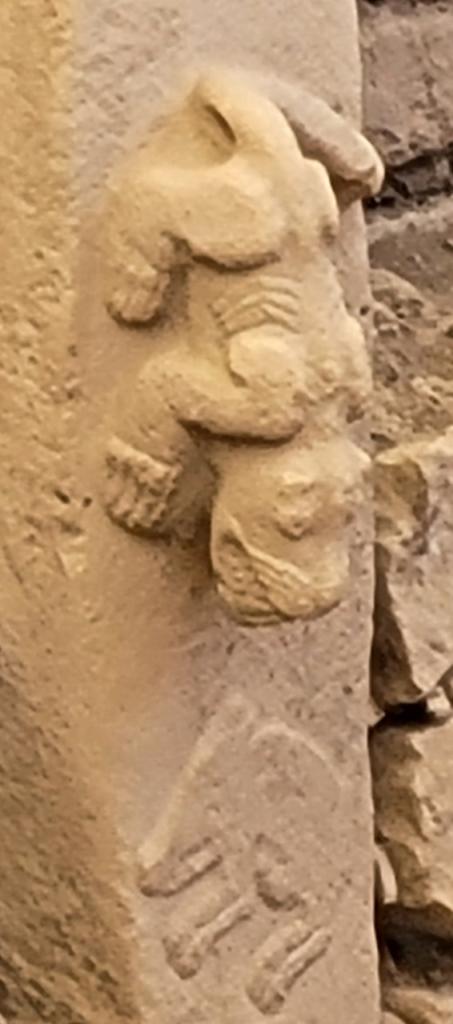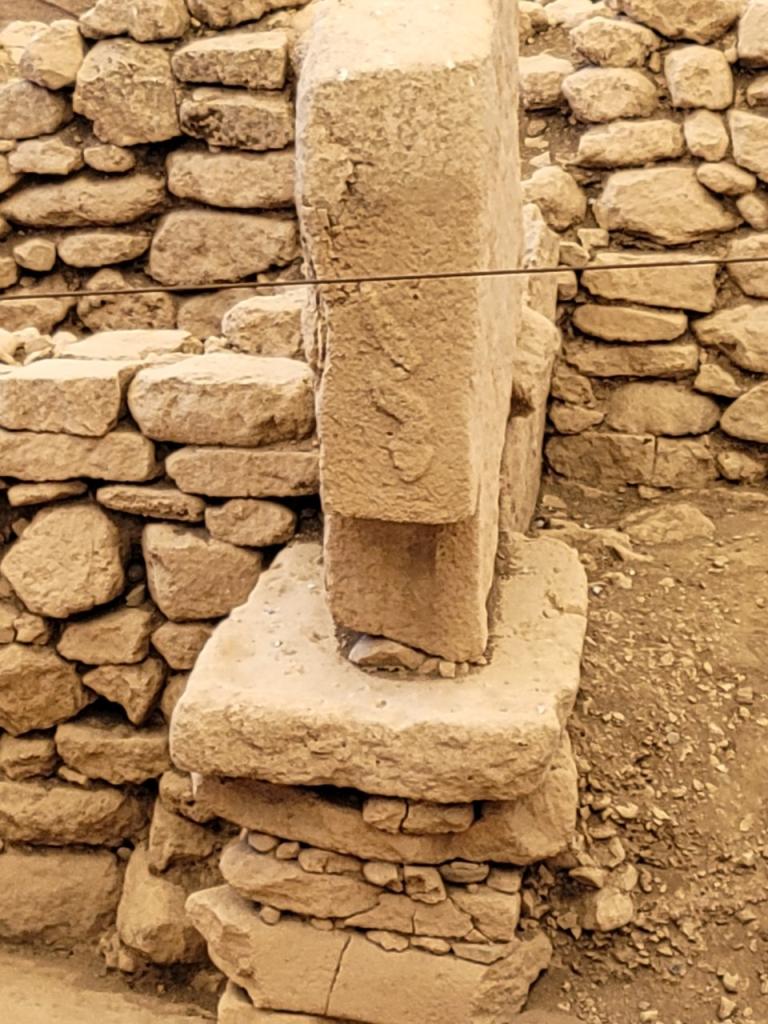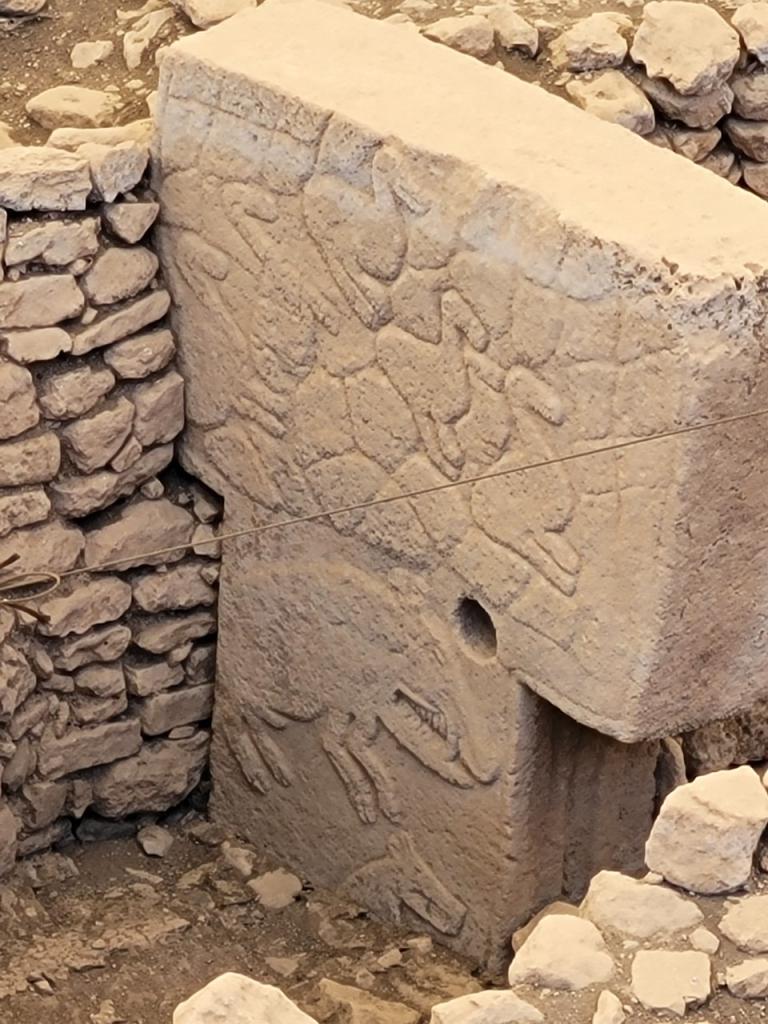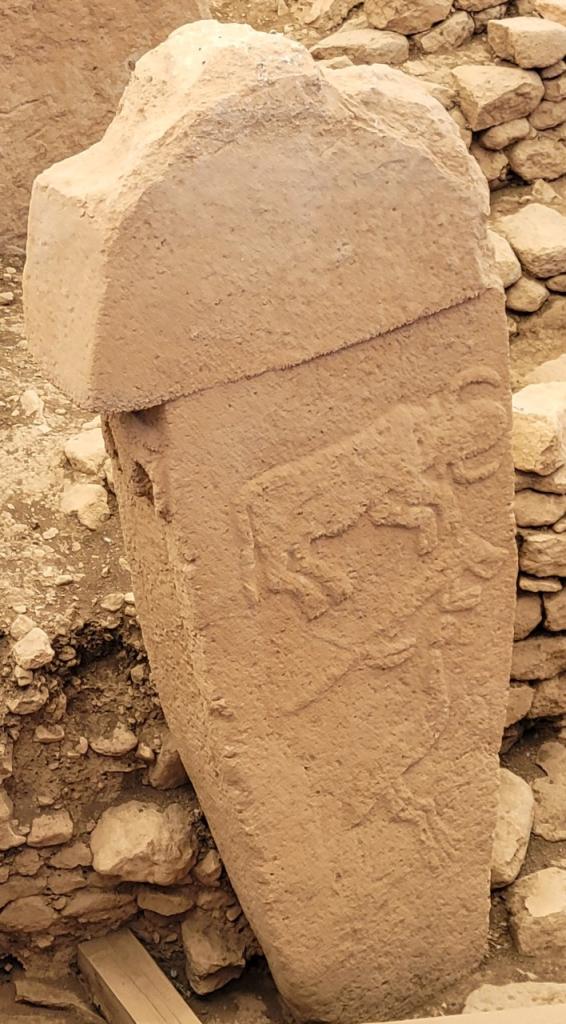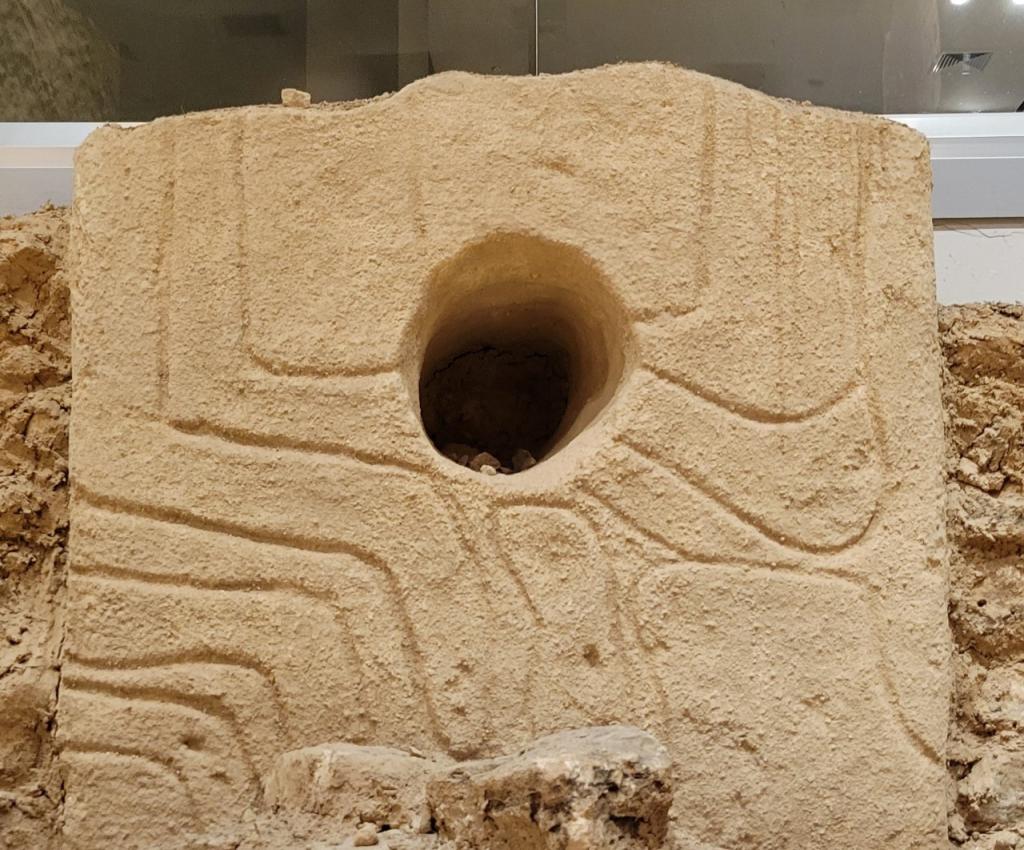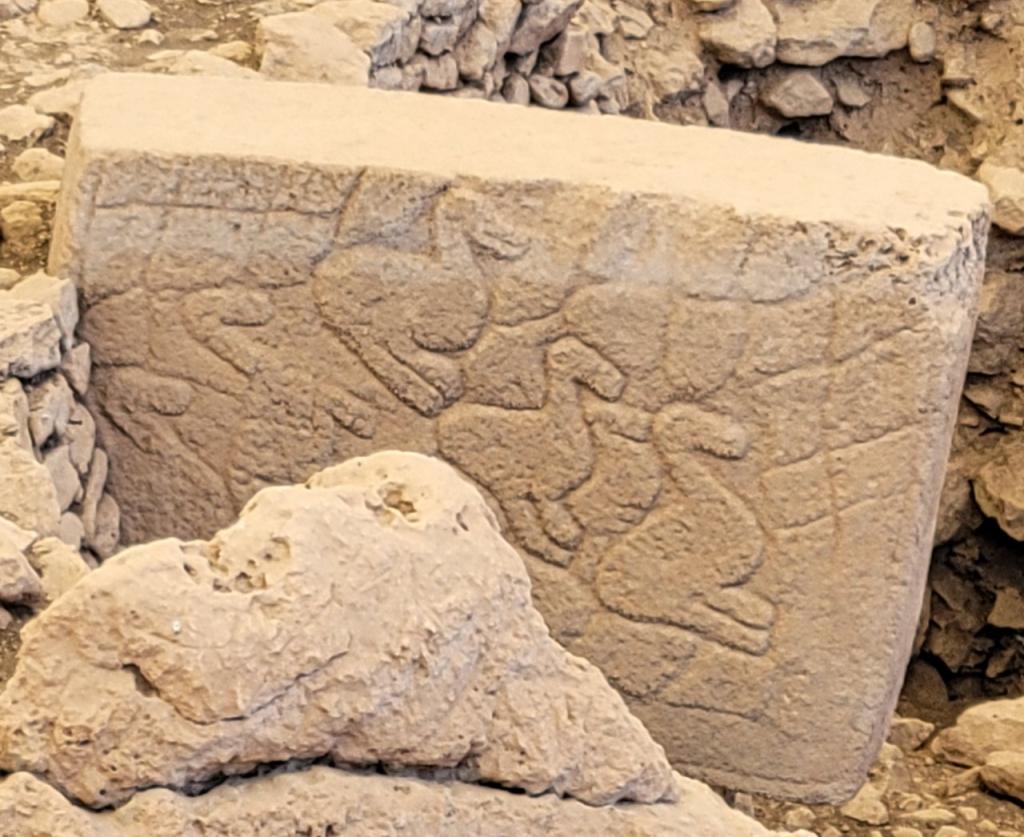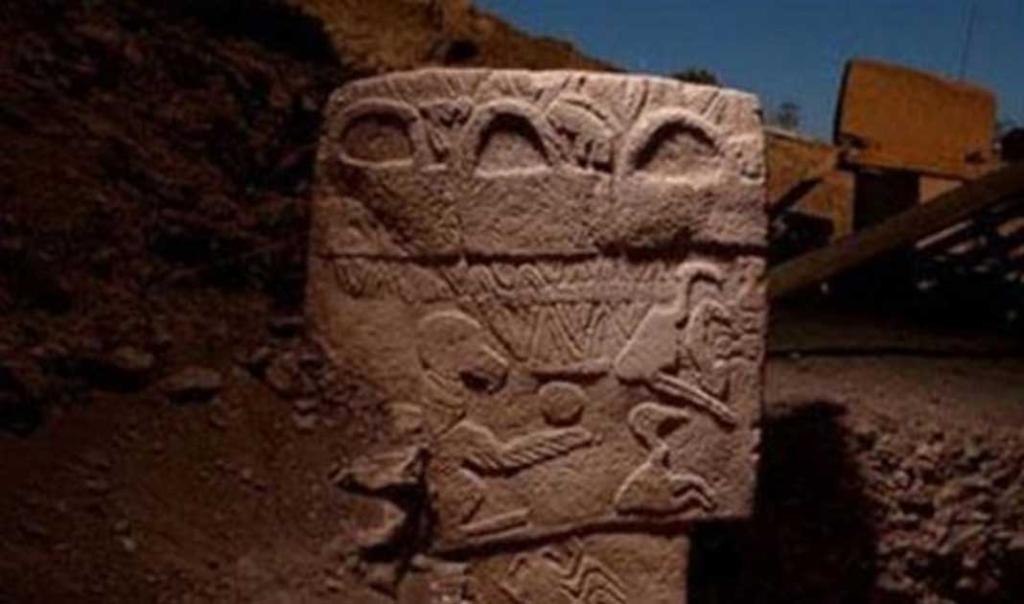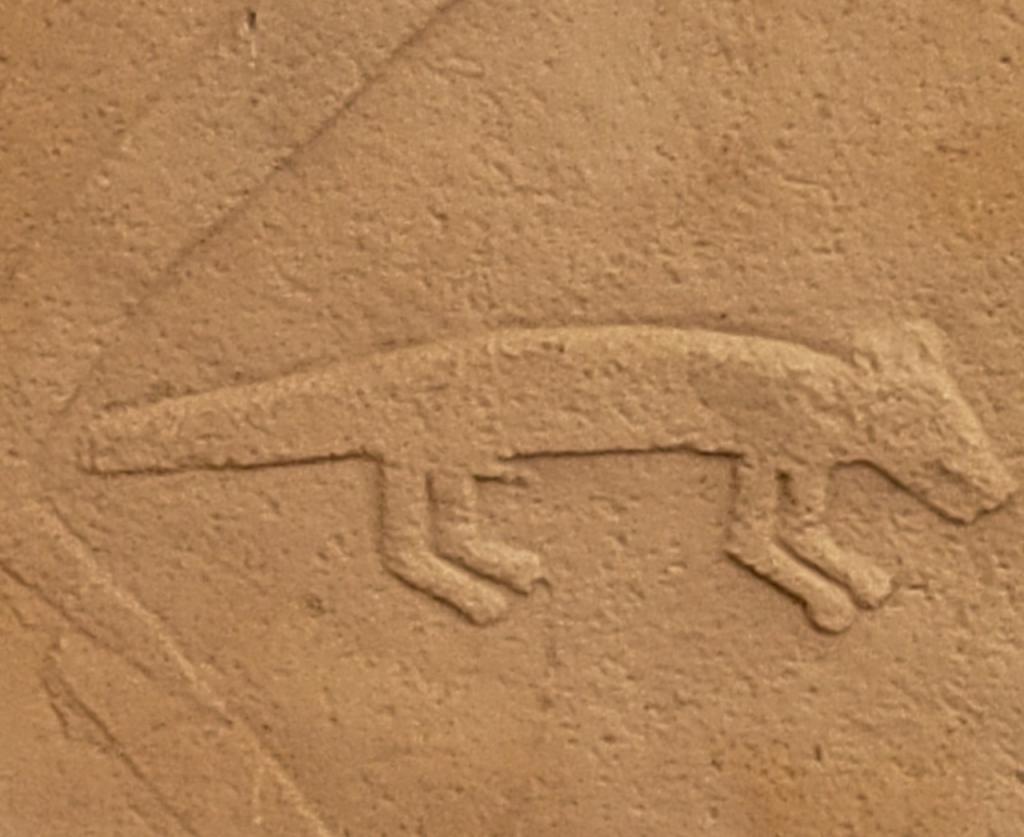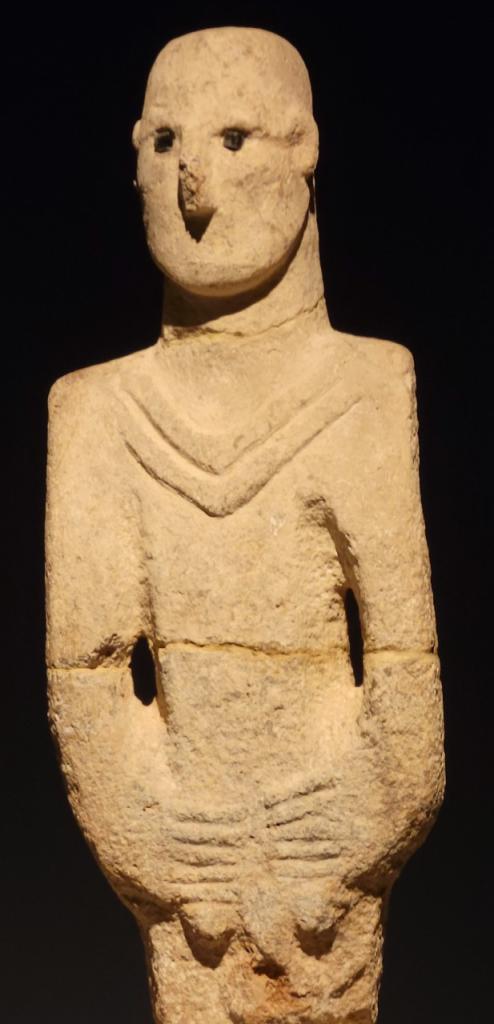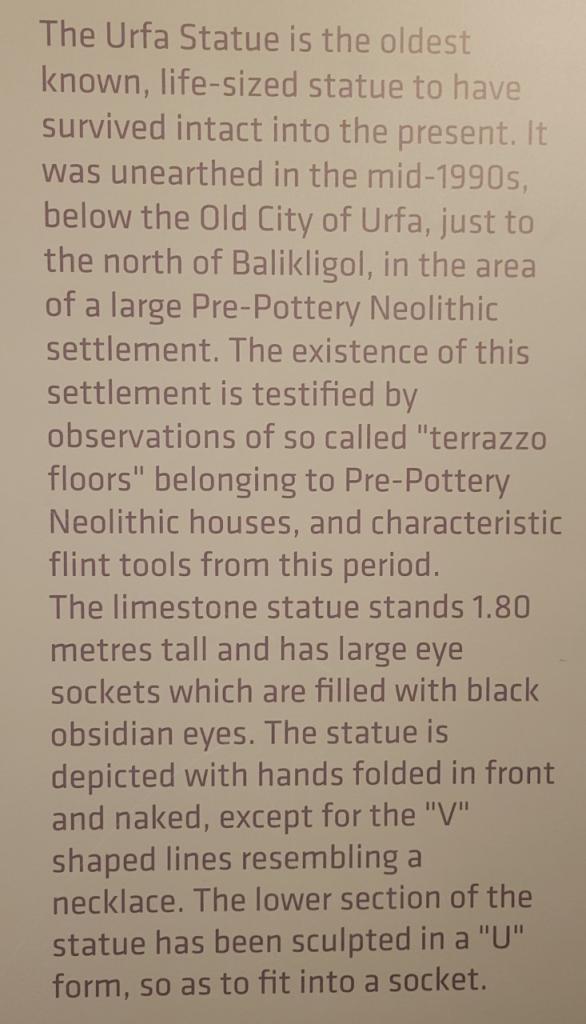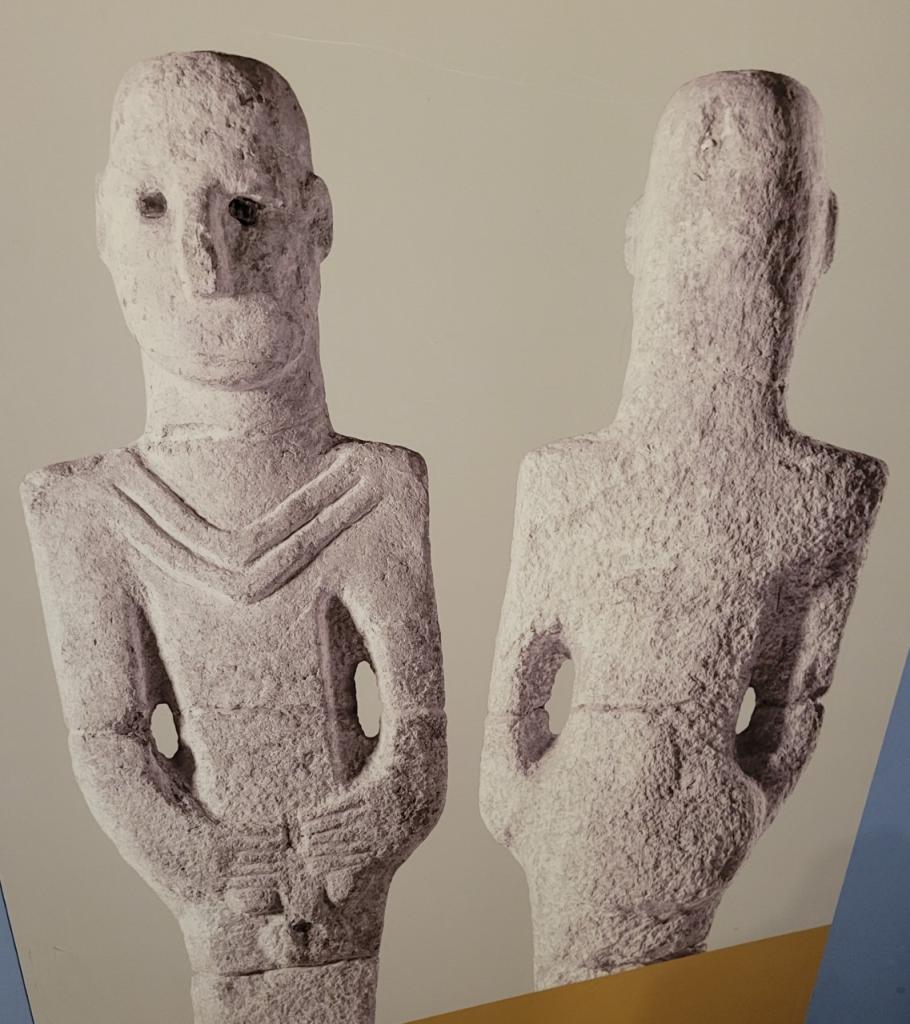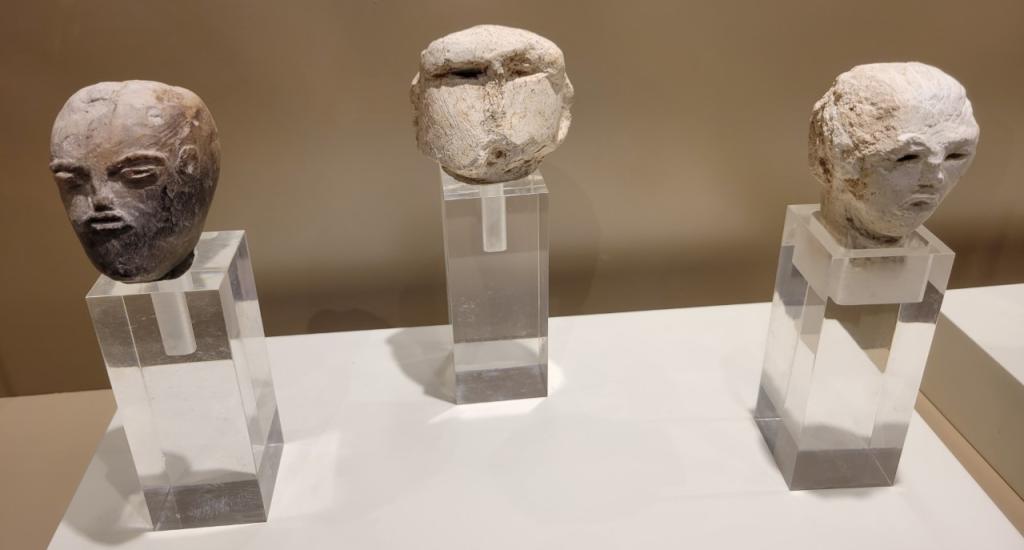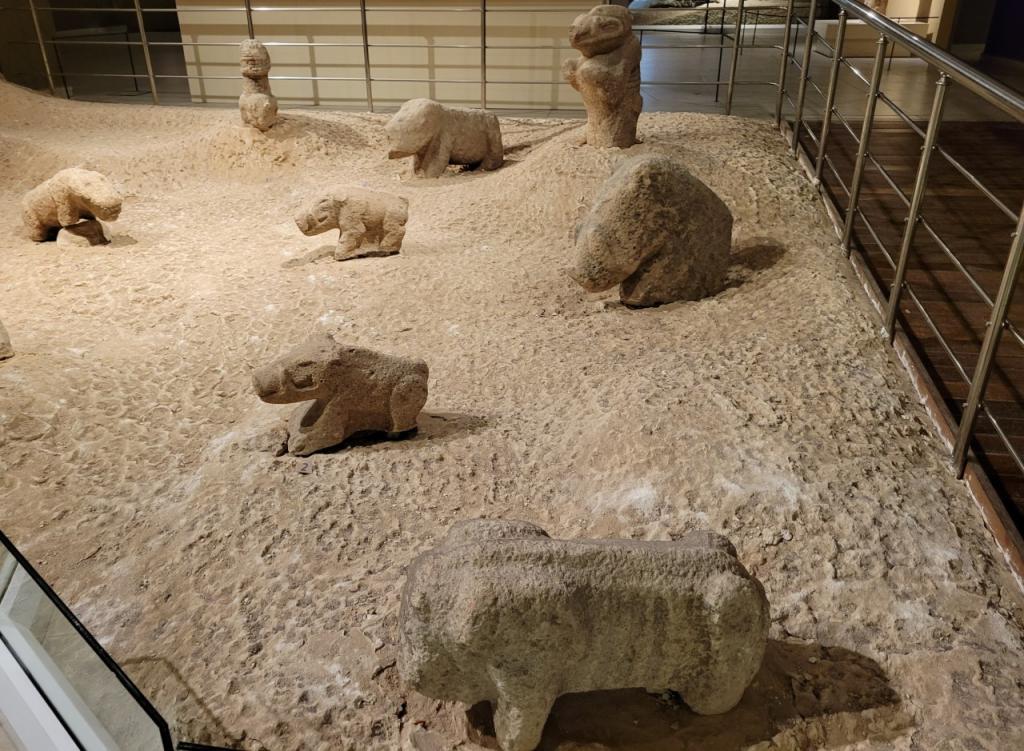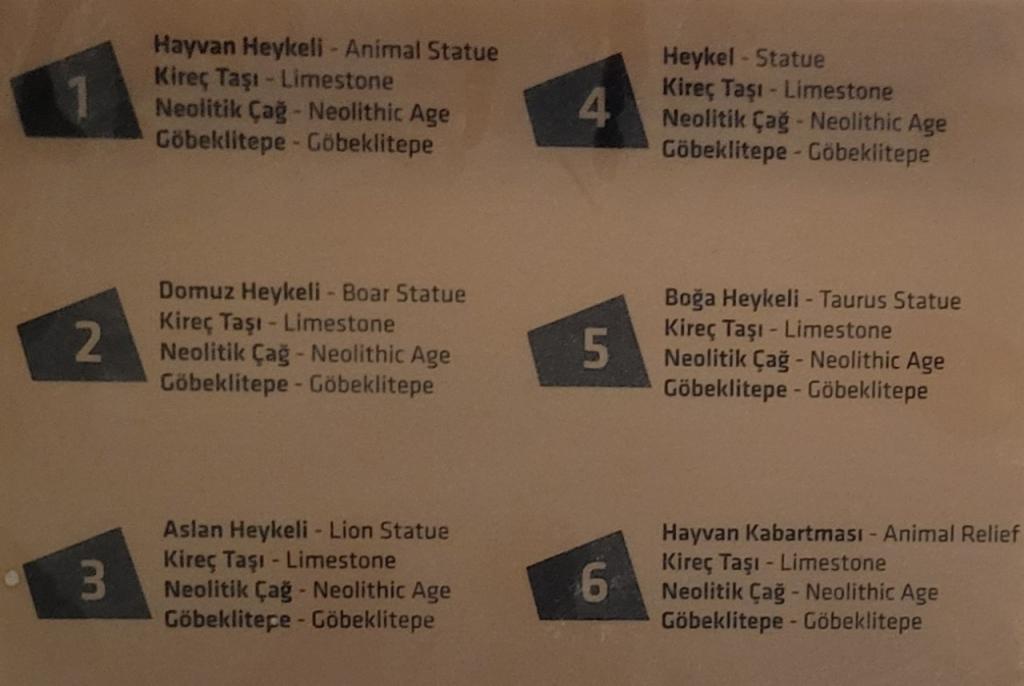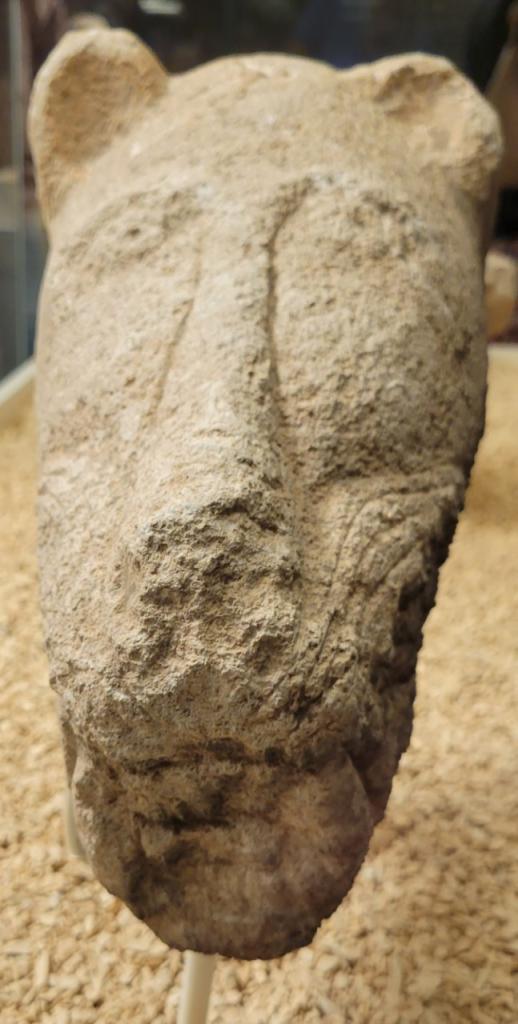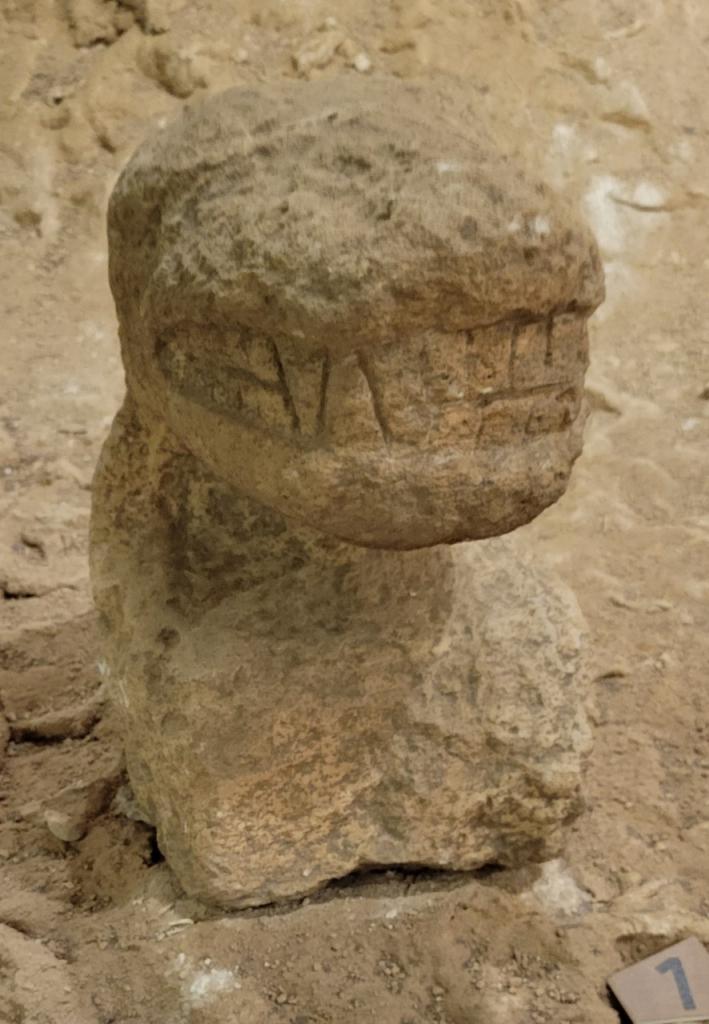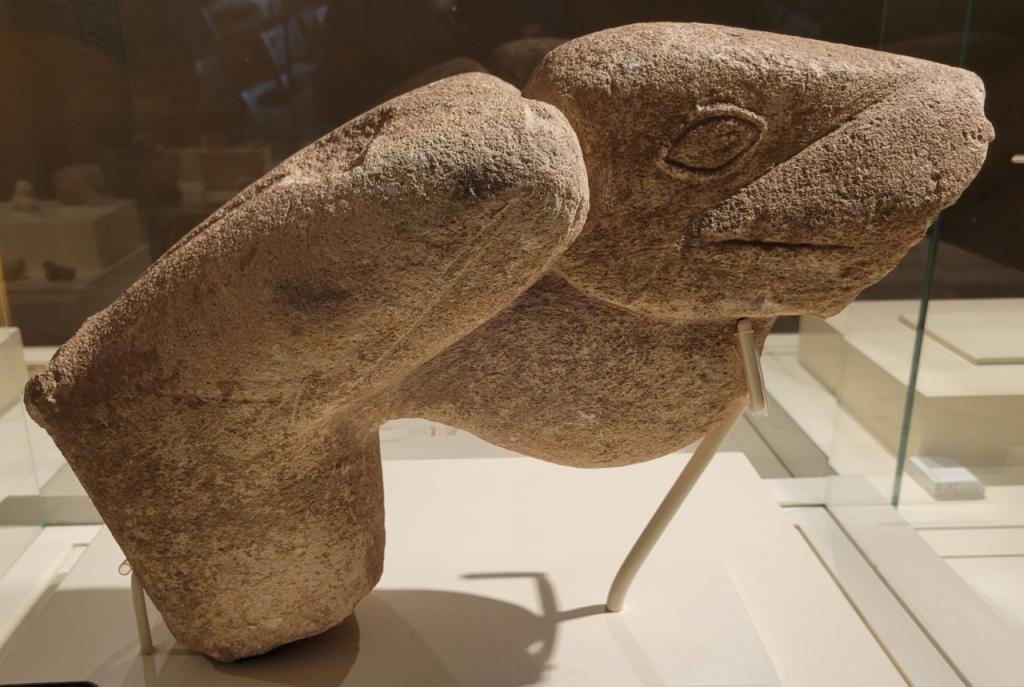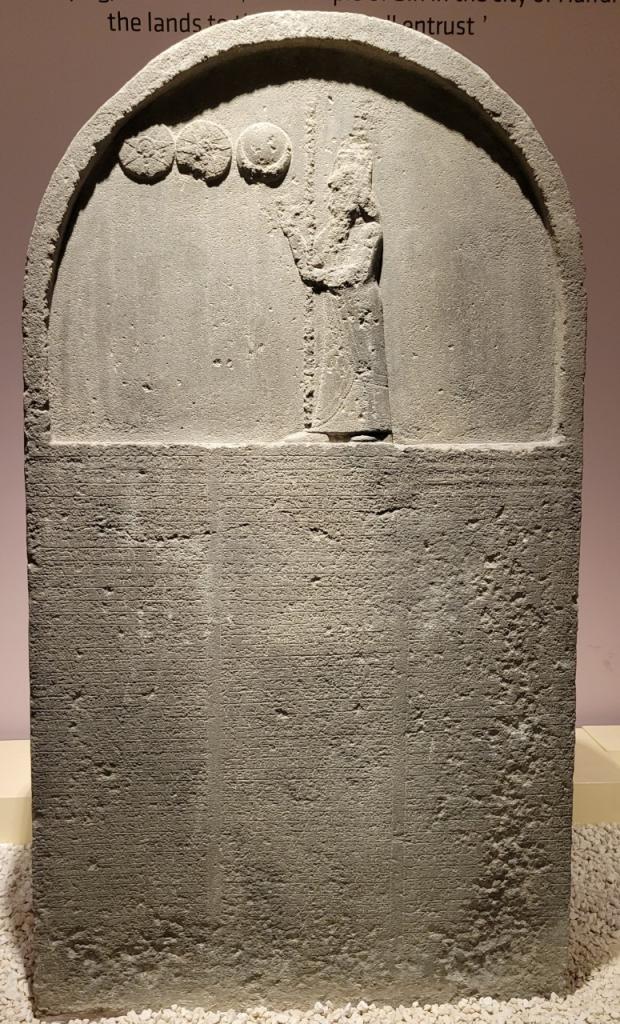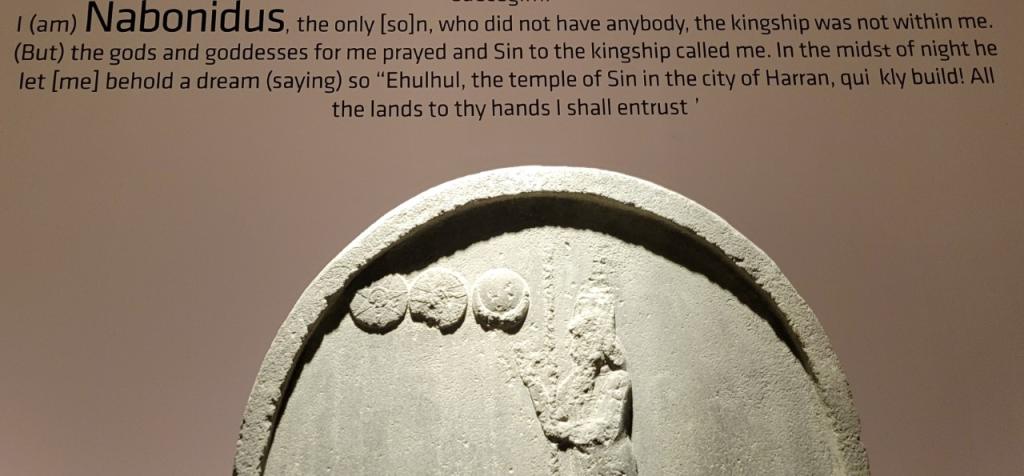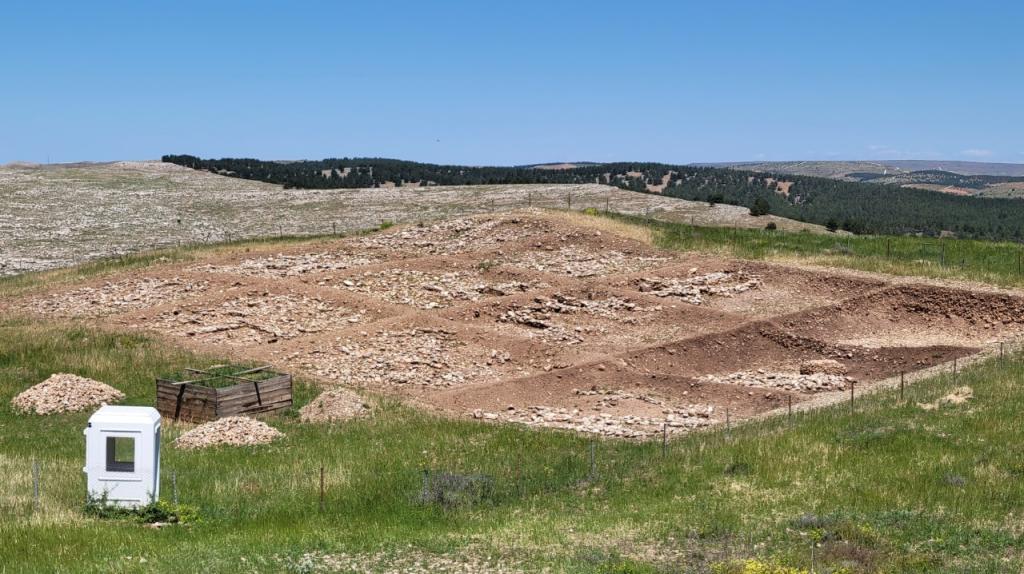Gobeckli Tepe (which means pot-bellied hill in Turkish) is a religious site, a high place in the OT sense, in southeastern Turkey which has rightly created a sensation. The German scholar who helped excavate it wrote a book about it entitled Der Ersten Tempel— the first temple. By various means of reckoning, this site dates to somewhere between 8-10,000 B.C. And it has mightily confounded secular anthropologists who had assumed that religion only shows up after agriculture and village life. But there is no village at Gobeckli Tepe, and never was, at most only huts where the workers stayed temporarily while building this amazing high place, as the OT would call it. So, first maps of this region of southeastern Turkey near Urfa to set the stage…
In fact, Gobeckli Tepe is only one of several sites excavated in recent years where we find evidence of ritual, of religion. Here is the sign posted at the site itself to explain things….
When I first came to this site about 20 years ago we had no such signs, nor a covered archaeological site, nor a proper museum to house the findings that could be moved to a safer place. Now we have all of this and more. Here are some artistic drawings of what it may have been like in say 9,000 B.C.
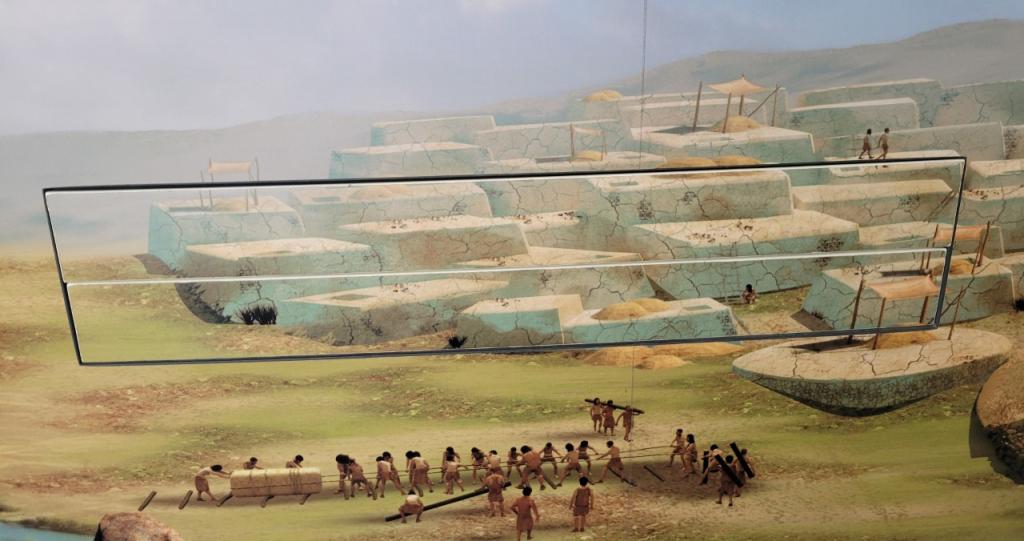 The stone was excavated on this very location, and we can even see on the top of the hill stones partially carved but not yet moved. This is what the farmer’s plow ran into when the discovery was made now a good 30+ years ago.
The stone was excavated on this very location, and we can even see on the top of the hill stones partially carved but not yet moved. This is what the farmer’s plow ran into when the discovery was made now a good 30+ years ago.
And here are the kinds of huts the builders would have stayed in.
If in fact the high place did have a roof, as depicted above, then this probably rules out the notion that what was going on was the killing of animals and then exposing their entrails on platforms for the gods and birds to consume. No, it appears this was traditional ritual sacrifice, like in the OT involving humans and the gods, animals offered to the deities in hopes of avoiding judgment, curse, disease, drought, famine etc.
While many secular anthropologists and archaeologists may be puzzled by this, those who know the Bible will have an explanation, as did the author of the first book on this site— human beings were created in the image of God, and from the very dawn of their existence they have been religious. Religion is not the product of human evolution and the result of civilization causing the need for solutions to human hostilities. So let’s see the site itself….
Here is the hill and surrounding area itself…. and that is Syria in the distance. It is interesting to ask what stopped this process of building dead in its tracks—- the lots of river sand the remains of which are still to be found on the tops of these hills. I’m thinking flood—- hmmm… what flood is mentioned in Ge. 6-9 that landed Noah and his family on the nearby mountains of Ararat?
Here is the nice new shelter for the archaeological site itself…
Notice several pictures above the drilled hole in the standing stone. Possibly this was to tether the animal before it was sacrificed.
This one shows the huts the workers must have stayed in. The building process took a long time, and was ongoing.
As you can see, we have carved images of all kinds of different critters, birds including vultures, cattle, maybe camels, lizards, warthogs, snakes, and much more. But where are the human images? In this last picture, we see arms reaching around to grab a creature…. and if we widen out that image we see this…
And on the front side this….
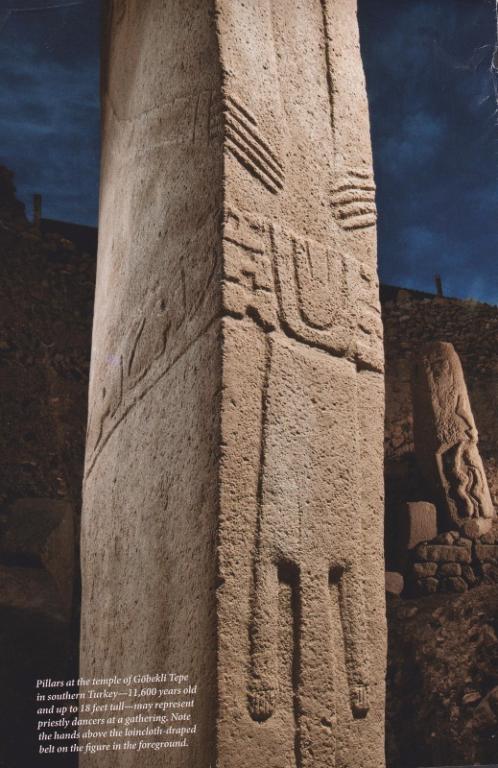 (These last two images I owe to Nat Geo, otherwise I used my own shots with one exception, the 4th picture above).
(These last two images I owe to Nat Geo, otherwise I used my own shots with one exception, the 4th picture above).
This last image shows the body of a person with ritual attire on, whom I will call a priest. You see his hands and ceremonial waistband. But there are human facial images. But when we go to the museum in Urfa, we find a few human representations, but they are not from Gobeckli Tepe, they are from nearby sites like Chatil Houyuk, Nevil Kori and elsewhere.
Again this seems to be ritual attire.
Far more precise and detailed and interesting are the small animal images taken from the Gobeckli site….
There is much more to see in this museum but I will leave you with just a couple of more important items…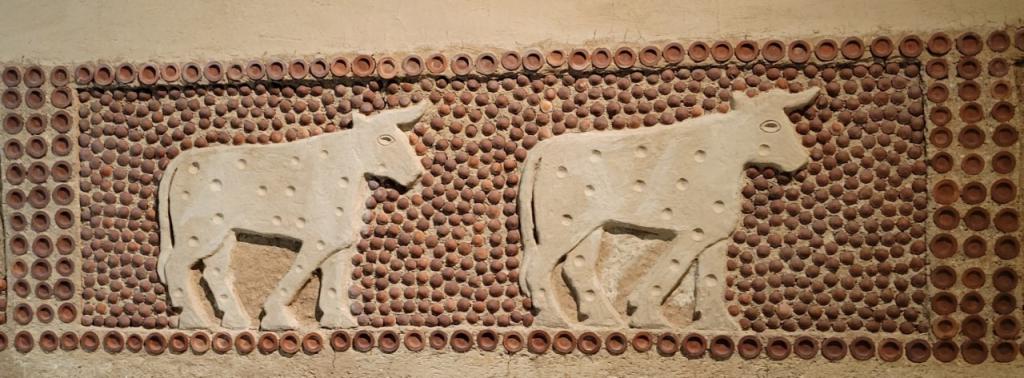
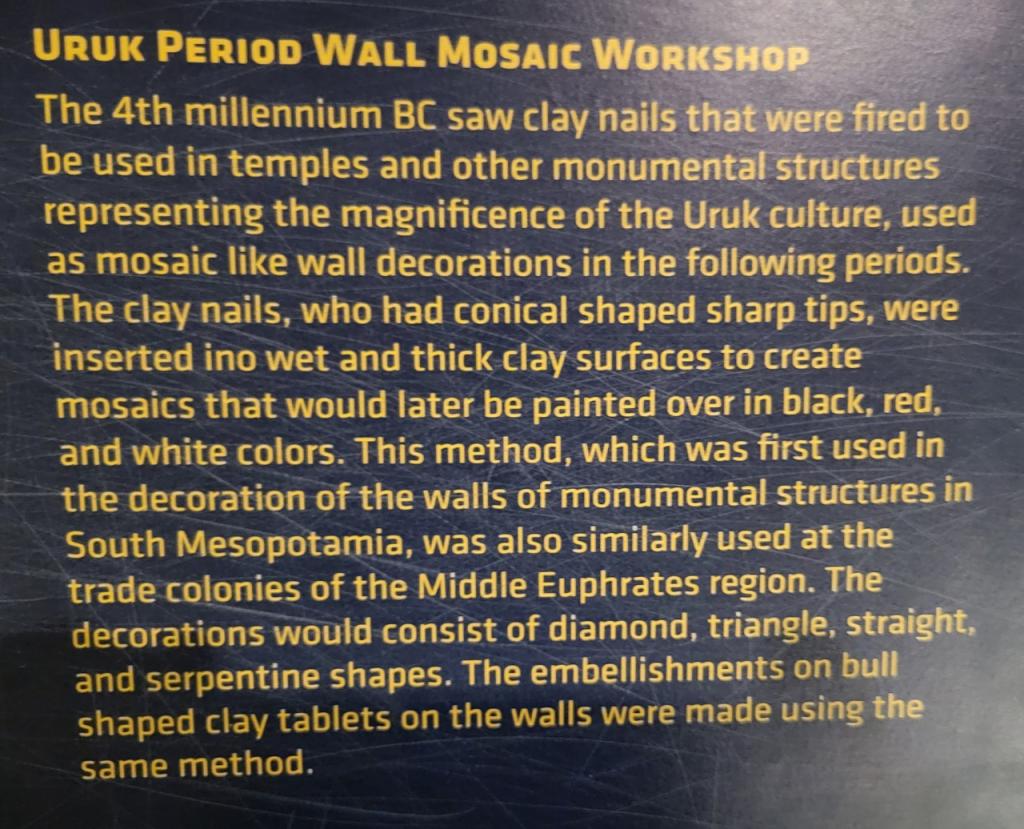
Who you may ask was Nabonidas, the consultor of star signs? He was the last king of the Babylonian Empire ruling from 556 B.C. to the Empire’s demise, the last native ruler of Mesopotamia. He is said to be a proto-archaeologist and a religious reformer of sorts. A very interesting king indeed. It was Cyrus the Persian of Biblical fame (the man who let Jews go home from Babylon) who conquered Nabonidas in 539 B.C. and put an end to the Babylonian rule. But even before that he got in hot water for trying to replace the god Marduk with the god Sin, and he had to go into exile himself to Arabia, during which time, while he was still king, Belshazzar (again of Biblical fame) acted as his regent in Babylon. Religious reformers do tend to get in hot water (see Martin Luther). When Nabonidas returned to Babylon he went to Haran (yes that Haran where Abram wen) to rebuilt the temple to the god Sin, the moon god of that region. All of this should ring some bells for those knowing Genesis. But I digress. The archeologists have discovered many more standing stones at Gobeckli Tepe, for instance in this nearby field which they are marking out for digging. Stay tuned.


